
Starting June 1st, 2023 Our warehouse fee will be $0.65/cubic foot per month
In effort to lower the warehouse storage fee during inflation, we have went narrow aisle racking.This construction took us four months but the project is finally completed. With narrow aisle racking, we are able to drop storage by 24%.We as partners will go through this inflation together.
07/29/2024
The concept of "pick to box" is emerging as a game-changer in the fast-paced world of logistics, where every second counts and accuracy is paramount. This innovative approach streamlines the order fulfillment process, ensuring that items are picked and packed with precision, reducing errors, and speeding up delivery times.

As e-commerce continues to surge and customer expectations grow, adopting pick to box methodologies can significantly enhance the efficiency and reliability of warehouse operations. Whether you're managing a small warehouse or a vast distribution center, understanding and implementing pick to box strategies can lead to substantial improvements in productivity and customer satisfaction.
Pick-to-box is a streamlined approach in eCommerce fulfillment, where goods are directly retrieved and placed into final shipping boxes. This method merges order picking, consolidation, and packing into a single process. In manual fulfillment centers, workers navigate the warehouse with carts, placing items into the boxes destined for customers. This minimizes movement in the picking phase, enhancing efficiency. Unlike batch picking where items are sorted separately after collection, pick-to-box involves immediate sorting into the shipping box.
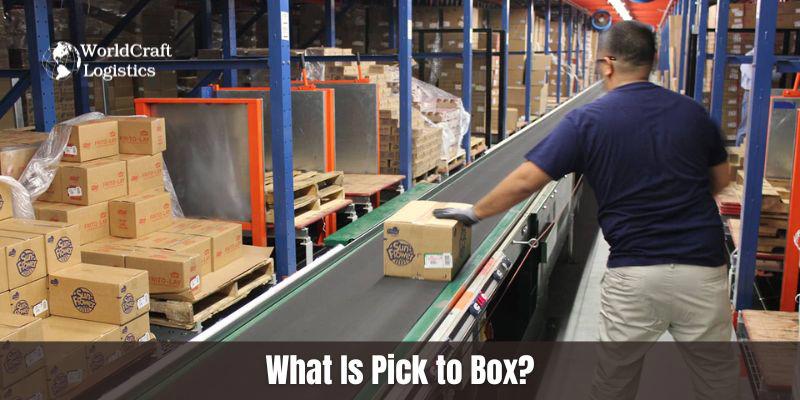
Read other articles from Worldcraft Logistics below, it will definitely help you save a lot of time to learn new knowledge!
👉 Automated Order Fulfillment Guide For Ecommerce in 2024
👉 Awaiting Fulfillment Meaning & Why Is It Important in Ecommerce?
👉 Unlocking B2B Fulfillment Excellence: Strategies and Solutions for Customers
Effective deployment of pick-to-box requires upfront planning, particularly in calculating package sizes and assigning picking carts. In environments lacking digital logistics tools, managers must estimate the workload for each worker and set order processing priorities. Optimizing pick paths is crucial for efficiency, but the complexity and potential for error are pushing companies towards digitized picking management.
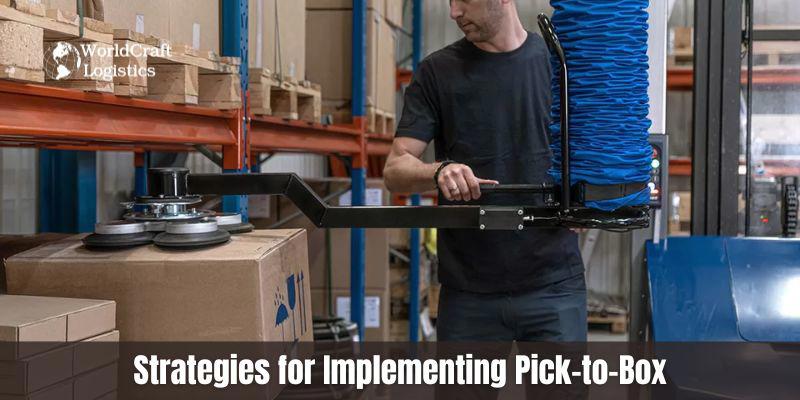
In the realm of warehouse order picking, there's no definitive "best" method; each technique suits different warehouse layouts and operational needs. These fundamental methods can all be integrated with the pick-to-box system for enhanced efficiency.
In zone picking, each worker is responsible for a designated area within the warehouse. They select items only from their zone before passing the cart to a colleague in the next area. This approach minimizes the distance pickers need to traverse, effectively creating a streamlined assembly line, particularly beneficial in larger warehouse settings.
Piece picking involves filling one order at a time, allowing workers to concentrate on a single order, thus minimizing errors. However, this method can be time-consuming, as it often requires traversing the entire warehouse for each order. Best suited for smaller operations with fewer orders, piece picking is occasionally used by third-party logistics companies for urgent or end-of-day orders, though it's not typically their primary strategy.
This method involves grouping and picking items that appear in multiple orders simultaneously. By batching similar orders, pickers can efficiently collect items for several orders in one go. Often referred to as cart picking, where a cart is used to collect items into specific bins, batch picking streamlines the route through the warehouse, expediting the fulfillment process. However, pickers may still need to navigate the entire warehouse to gather all necessary items.
Wave picking merges the principles of batch and zone picking. Here, carts containing batched orders move sequentially through different zones. This method harnesses batch picking's efficiency and zone picking's reduced travel, culminating in a fluid, wave-like movement of orders through the picking process. The pick-to-box method enhances this further by incorporating a packing phase, elevating overall efficiency.
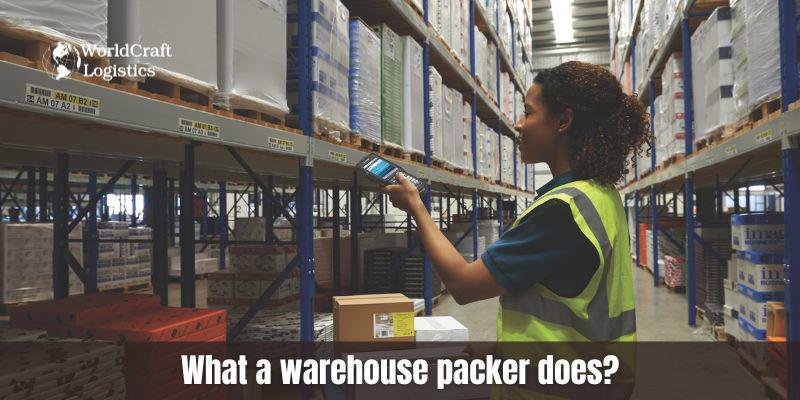
To effectively assess the advantages and disadvantages of the pick-to-box method, it's essential to comprehend the typical responsibilities of a warehouse packer. Traditionally, packers operate at designated packing stations. Their role begins when pickers bring them bins filled with items. Here, the packer's task is to select the appropriate box for each order, adhere to specific packing guidelines tailored to the product and brand, and attach the correct shipping label. Once the items are securely packed, the packer places the box onto a conveyor belt. This belt transports the boxes to the outbound dock, where they are sorted and prepared for shipping. Understanding this conventional packing process is crucial for evaluating how the pick-to-box method modifies and potentially streamlines these operations.
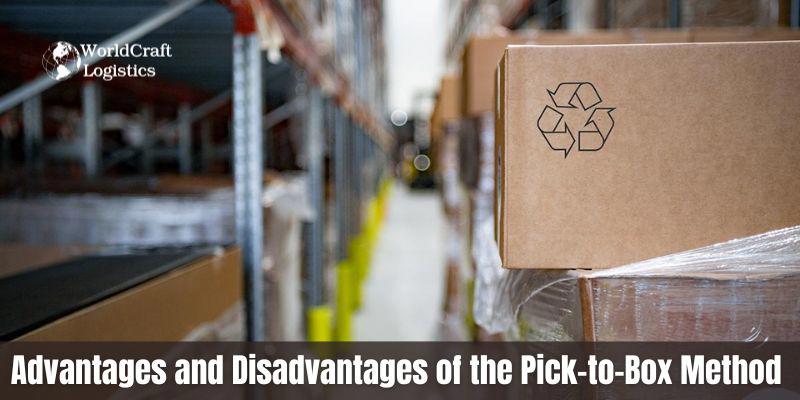
The pick-to-box method is attractive for several reasons, chiefly its integration of order picking and packing roles. This consolidation means warehouse staff are more versatile, capable of performing multiple tasks, which can be particularly beneficial in environments with a lean workforce. Additionally, by combining these roles, there's a potential to operate with fewer staff members and even reduce the warehouse's physical footprint by removing separate packing stations.
However, this method diverges from traditional picking methods like batch, zone, and wave picking, which optimize fulfillment by concentrating pickers' efforts in more confined areas of the warehouse. Introducing the additional responsibility of selecting the correct box for each order can complicate the picker's role. This added complexity not only risks slowing down the process but also increases the likelihood of errors.
Furthermore, maintaining distinct roles for picking and packing in the fulfillment process offers certain advantages. It allows for a specialized review of the process, with packers dedicated to ensuring that each order is packed in the most suitable box with the correct infill. This separation can enhance overall order accuracy and quality of fulfillment.
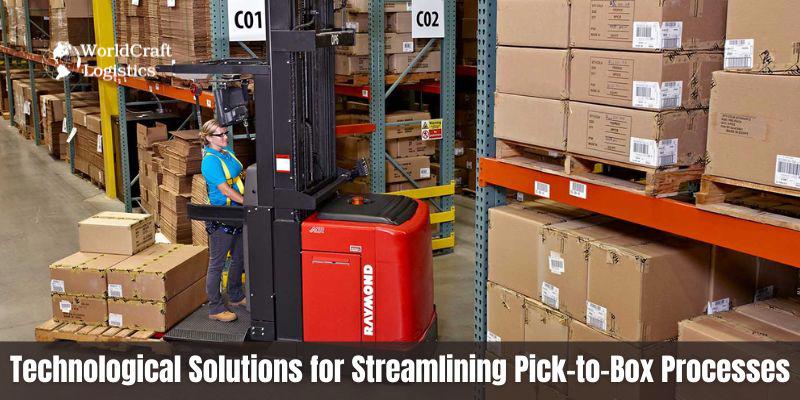
Order picking is often one of the most expensive processes for businesses. Implementing a Warehouse Management System (WMS) can significantly increase efficiency. This system automates storage location assignments, aiding in efficient picking. It works based on predefined rules and criteria set by the logistics manager, ensuring optimal item placement. Advanced systems like Warehouse Slotting Software analyze product demand history to optimize stock distribution, enhancing productivity. This is particularly crucial for the pick-to-box technique, as it groups commonly ordered goods, reducing unnecessary movement in the warehouse.
Warehouses utilizing a WMS often incorporate technologies like RF scanners and pick-to-light systems. These tools, linked to the WMS, provide step-by-step guidance to operators during order fulfillment. For pick-to-box methods, technologies like voice picking are also beneficial. This system allows pickers to receive instructions via wireless headsets, keeping their hands free and improving efficiency.
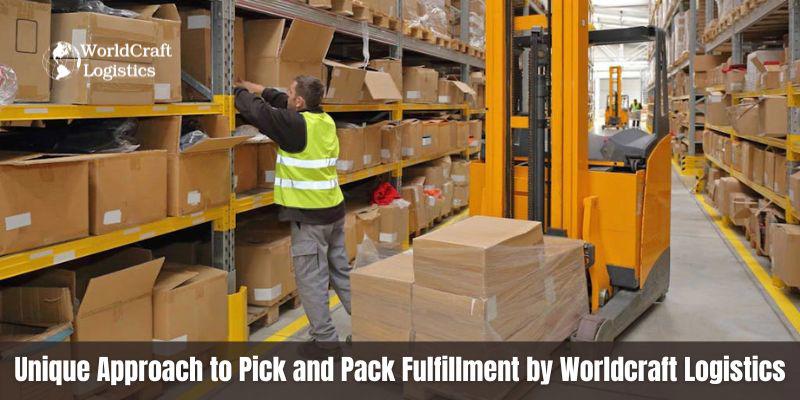
Worldcraft Logistics maintains high accuracy in order fulfillment by employing specialized picking and packing methods that minimize errors. Here's how they ensure precision:
Scanners in Picking: Pickers use scanners to associate each order with a specific bin code, ensuring each item is correctly allocated.
Error Detection: The scanning system is designed to identify and alert pickers to any mistakes. The process halts until the error is corrected, ensuring accuracy.
Packers' Role: Packers do more than just fill boxes; they cross-check the picked items with the pick list before packaging, adding another layer of verification.
Incentives for Accuracy: The company motivates its staff with bonuses for error-free processing, fostering a culture of precision.
Continuous Improvement: Worldcraft Logistics constantly seeks ways to enhance their operations, aiming for top-notch fulfillment with same-day picking and shipping.
They encourage clients to trust them with the pick-to-box method, promising to handle orders with utmost care and efficiency, offering a hassle-free fulfillment experience.
Before choosing a specific order picking method for your warehouse, it's crucial to analyze variables such as product type, order volume, and shipping frequency. To enhance the productivity of your logistics facility, you can select from various picking approaches. Optimally applied, the pick-to-box method accelerates order processing by integrating picking, consolidating, and packing processes. However, due to the complexity of modern logistics operations - characterized by numerous orders with few product units - more and more businesses are relying on automation and digital solutions to minimize the risk of errors.
In the article above, Worldcraft Logistics has shared up-to-date knowledge about pick to box. If you have any questions, please contact us, and our expert consultants will advise you on the best solution for your company.
SEO
Digital Marketing/SEO Specialist
Simon Mang is an SEO and Digital Marketing expert at Wordcraft Logistics. With many years of experience in the field of digital marketing, he has shaped and built strategies to effectively promote Wordcraft Logistics' online presence. With a deep understanding of the logistics industry, I have shared more than 500 specialized articles on many different topics.

Education
01/05/2025

Education
02/18/2025

Education
01/01/2024

Education
08/28/2024

Education
11/13/2023